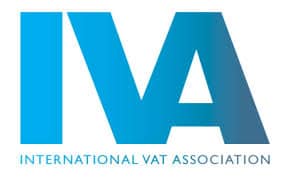On May 17, the European Commission (EC) has released a draft proposal for a reform of the EU Union Customs Code with potential VAT implications that would come in place as early as 2028. The proposal includes many ambitious changes, such as the introduction of an online tool “EU Customs Data Hub” for businesses, the use of artificial intelligence for smarter customs checks, and changes to cross-border e-commerce processes. This new proposal is further reviewed in this article in more details.
The aim of the EU Customs Union Reform
The main goals raised by the EC are to simplify, unify and digitalize currently administratively difficult processes of the EU Customs. With the global trade amounts increasing further, and new risks evolving, EU also wishes to maintain the highest control standards for the goods entering its territory.
What are the main changes introduced in the EU Customs Union Reform?
In order to simplify and streamline customs procedures, as well as to enable more effective control of customs operations, the project foresees establishment of a single European Customs Authority, responsible for implementing and managing a common platform for the customs clearance of goods across all Member States – new EU Customs Data Hub. Initially, it is planned to be implemented by 2028 for customs clearance of goods in the context of e-commerce (remote sales of imported goods). Subsequently, it will be extended to cover all operators by 2032.
In addition, the Reform suggests a creation of a new “Trust and Check” accreditation that will enhance the existing Authorized Economic Operator (AEO) regime for reliable operators. This accreditation will allow them to release goods into the European Union for free circulation without active customs intervention (in certain cases). Accredited operators will also have the option to choose the place of customs clearance within their country of establishment.
What are the VAT implications of EU Customs Union Reform?
The main change this reform brings to the VAT legislation, is relating to the 150 threshold currently in place for imported goods. The proposal suggests removing the €150 consignment threshold that determines the liability of vendors and e-commerce platforms when selling imported goods to EU consumers. This removal would have several implications for VAT compliance:
- The Extension of the “import one-stop shop” (IOSS) simplification: The IOSS mechanism was introduced in the EU 2021 VAT e-commerce package to simplify VAT compliance for non-EU traders selling goods to EU consumers. Currently, it applies only to imports with a value below €150. If the threshold is removed, the IOSS simplification would apply to all goods sold to EU consumers, regardless of their value.
- An extension of the “deemed seller” regime: The VAT e-commerce package introduced the deemed liability of marketplaces and platforms for sales of goods to EU consumers with a value below €150. This regime relieves individual sellers on marketplaces from registering for VAT. Removing the threshold would extend this regime to all goods sold to EU consumers from outside the EU, regardless of their value.
- An extension of the “special arrangements” simplification: The VAT e-commerce package also introduced special arrangements allowing certain operators, such as postal operators and customs agents, to declare and remit collected VAT on imports monthly. Currently, this simplification applies to goods with a value below €150. Removing the threshold would extend this simplification to all goods imported from outside the EU for sale to consumers.
- An introduction of a “deemed importer” regime: The proposed reforms include a concept called the “deemed importer
,“, referring to any person involved in distance sales of goods imported from third territories or countries authorized to use the IOSS simplification. This regime would require traders to incur a customs debt upon accepting payment for the sale and allow them to apply a simplified tariff treatment for sales to consumers, aiding in determining the appropriate customs value for VAT calculations.
Should your company have more questions on these introduced EU Customs changes and its impact to your business, do not hesitate to contact our team.






















